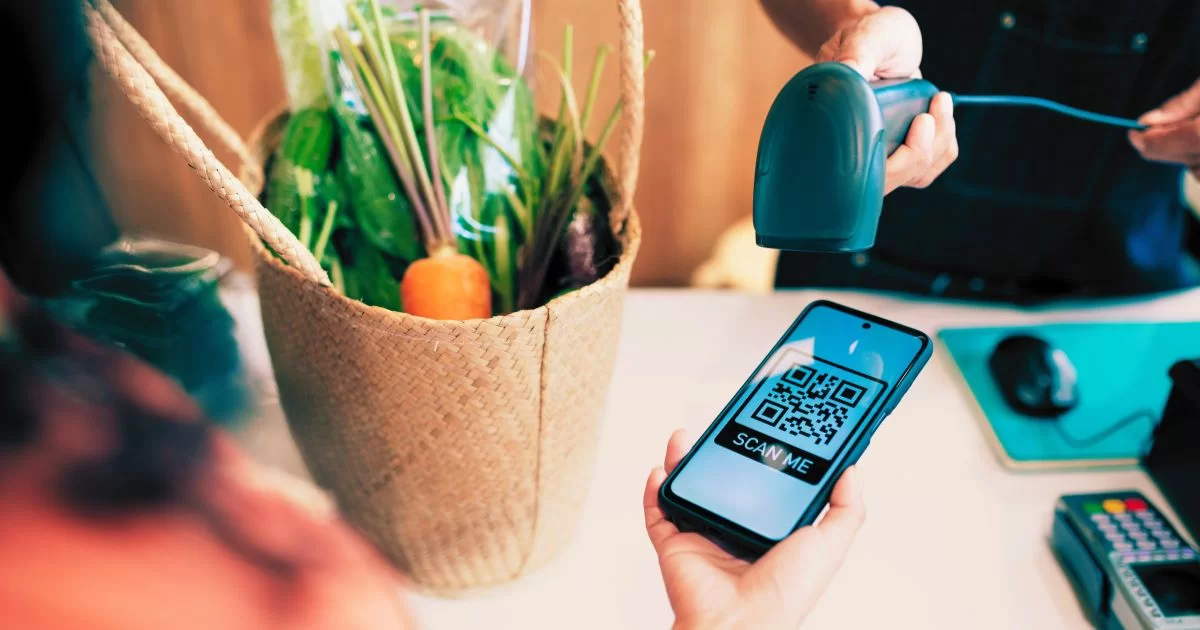
| December 6th, 2024 |
Payment Processing Services — Integrating QR Code Payments for Secure Transactions.
To start with, payment processing services are crucial in facilitating secure and seamless transactions for business, especially in a rapidly evolving commercial landscape. As the trend of QR code payments increases, businesses can provide the option of faster, convenient, and secure payment to the customers. This implementation not only improves operational efficiency but also meets the growing need for contactless and mobile payment methods.
To aid to better understand how QR codes revolutionize payment in U.S. merchants provided below words follow it. This blog describes how QR code payments can be beneficial, how to integrate them, and key security measures to be considered while adopting QR code payments.
Benefits of QR Code Payments in Payment Processing Services —
QR codes are no longer a novelty—they are becoming a standard feature in modern payment processing systems. By leveraging QR code technology, businesses can streamline transactions, improve customer satisfaction, and reduce operational costs. Let’s explore some of the key advantages in detail.
1. Enhanced Customer Experience:
Customers value convenience and speed. QR code payments eliminate the need for cash or card swiping, allowing transactions to complete in seconds using smartphones.
2. Operational Efficiency:
QR code systems streamline operations by automating payment processing, which reduces manual errors and accelerates reconciliation. Businesses can track payments in real-time.
3. Cost-Effectiveness:
Compared to traditional terminals, QR code payment systems reduce the need for expensive hardware, making them ideal for small to medium-sized businesses.
How to Integrate QR Code Payments with Payment Processing Systems —
Integrating QR code payments into payment processing services might seem complex, but with the right approach and tools, businesses can achieve it seamlessly. Following these steps ensures a smooth transition and optimized operations.
Step 1 – Select the Right Payment Processor:
Choose a provider offering integrated QR code capabilities. Payment processors like Stripe, Square, or Paycron provide APIs that simplify the integration process.
Step 2 – Upgrade POS Systems:
Ensure your POS system supports QR code scanning. This is essential for seamless functionality across in-store and online channels.
Step 3 – Customize Your QR Codes:
Use dynamic QR codes that include transaction-specific details such as amount and invoice numbers, which help prevent fraud.
Step 4 – Ensure Compatibility:
Test the QR code system across different mobile platforms to confirm smooth user experiences.
Step 5 – Train Staff and Educate Customers:
Provide training for employees to use the new system efficiently. Additionally, educate customers on secure QR code usage to build trust.
Addressing Security Concerns in QR Code Payments —
Security is a top priority in payment processing services, especially with the rise of digital payment technologies. While QR code payments offer significant benefits, businesses must adopt robust security measures to protect against potential risks. Let’s examine some of the essential steps to ensure secure QR code payment processing.
1. Encrypted Transactions: Use encryption technology to protect sensitive data during payment processing.
2. Fraud Detection: Modern payment processors incorporate fraud detection algorithms to flag suspicious transactions.
3. Dynamic QR Codes: Opt for dynamic codes that change with each transaction, making them harder to counterfeit.
4. Customer Awareness: Inform customers about risks like phishing QR codes and teach them how to verify legitimate codes.
Future Trends in Payment Processing Services with QR Codes —
As technology evolves, the future of payment processing services and QR codes looks promising. From wider adoption in diverse industries to advanced integrations with emerging technologies, QR code payments are set to transform commerce. Staying ahead of these trends can help businesses maintain a competitive edge.
1. Growing Popularity in Diverse Sectors: QR code payments are gaining traction in industries like retail, hospitality, healthcare, and utilities.
2. Integration with Mobile Wallets: Payment processing services are increasingly incorporating QR code compatibility with wallets like Google Pay and Apple Pay.
3. Blockchain-Based Security: Blockchain integration enhances transaction transparency and reduces vulnerabilities.
4. Evolving Regulations: Government agencies are implementing stricter regulations to ensure secure payment systems for merchants and consumers alike.
Conclusion —
Integration of QR Code Payments with Payment Processing services providing competitive edge to U.S. merchants in efficiency and security. This type of technology can help improve customer experience, streamline practices, and lower costs for businesses.